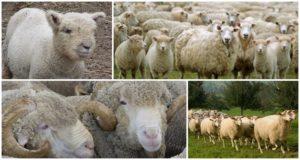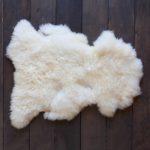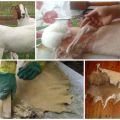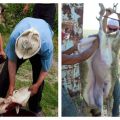Top 4 ways to make sheep skins at home and instructions
Breeding sheep is associated with the process of making sheep skins, sometimes you have to do it yourself at home. The process takes a long time, requires certain skills and efforts. Sheep skins are one of the products for which sheep are kept and raised, so the work on the material is of strategic importance. The income from the sale of tanned hides can be a significant part of the budget.
Features of dressing skins
Many breeders don't do their own dressing. They donate raw hides to special receptacles, and then take the finished material or leave it for further sale.
Sheep, lamb skin, or sheepskin, is called the wool removed from the animal with the skin, which is additionally trimmed and protected with an antibacterial coating. The skin is removed from the sheep or ram after slaughter and processed for 2-6 months. Dressing includes several main stages:
- Fleshness. This is the targeted removal of the subcutaneous layer from the surface of the raw material.
- Pickling. This is a processing option that will preserve the decorative qualities of the material in the future.
- Washing. Purification of the resulting material from processing particles.
- Tanning. The procedure that makes the sheepskin more durable improves its quality.
- Drying. Drying of sheepskin, complete elimination of moisture residues after washing or tanning.
In addition to the execution of the main stages, sheepskin is worked additionally to improve performance.
Who should be doing this?
A furrier is a person who professionally deals with dressing. A person must have special knowledge and physical strength in order to be able to work with heavy containers, turn over a wet sheepskin, lay it out for further drying.
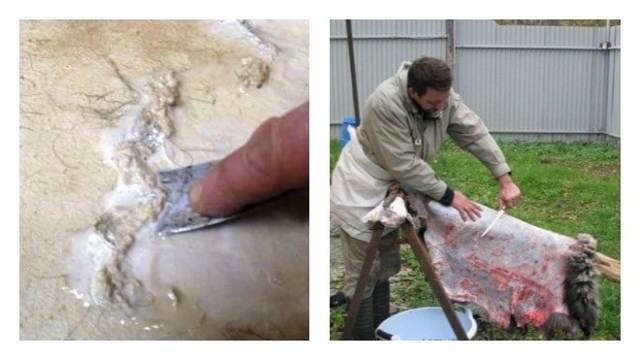
Reference! The average weight of a wet skin is 10 kilograms.
Tools and equipment
For each stage of dressing, special equipment is required. If you can use improvised means during drying or washing, then during fleshing, special devices of a narrow focus are needed:
- deck;
- pallet;
- scab;
- flesh machine or flesh knife;
- capacity.
Methods for preserving skins
Canning helps preserve the material. This is the only method that furriers use, because drying or freezing does not give a result in maintaining the qualities.
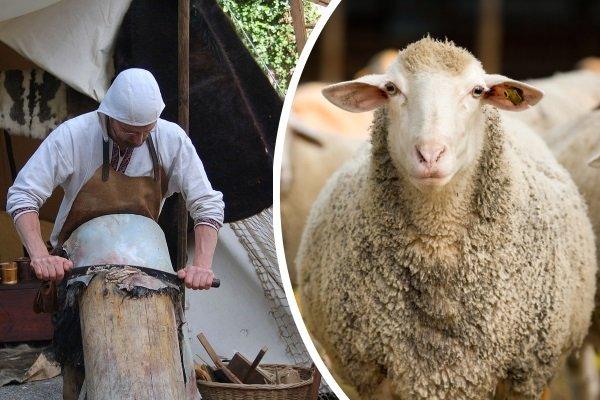
In large farms, raw materials are made in whole batches, so correct canning helps to preserve raw materials for as long as needed.
Wet salted
The wet-salted preservation method is used in winter. It is used after drying the skin removed from a ram or sheep. First, the material is spread on a flat surface so that the flesh is on top. Then sprinkle with salt. The calculation is based on weight. Usually about 800 grams of salt is used for one dressing. Salting lasts 8 days. After salting, the resulting dressing is folded in such a way that the flesh is inside. Then roll up, starting from the edges and moving towards the center. The resulting bundle is pulled with twine and put away for storage.
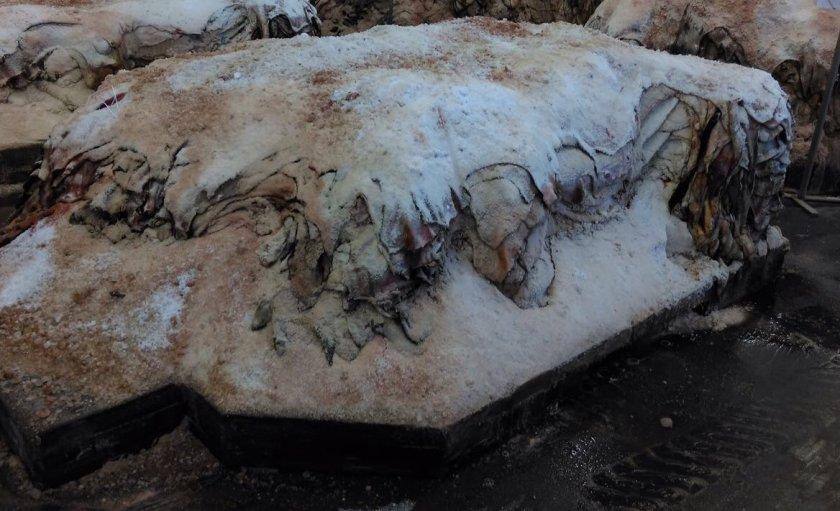
Dry-salted
The dry-salted method differs from the wet-salted method by the additional addition of naphthalene. This element allows you to scare off pests, to avoid damage to the material. Naphthalene is taken as 0.8 percent of the total weight of the sheepskin.
The skins sprinkled with salt and mothballs are stacked in piles. After 2-3 days of salting, the raw materials are dried naturally. In this case, it is necessary to avoid direct sunlight.
Reference! In winter, sheepskins are dried indoors, in summer they are hung outside in the shade.
Acid-salt
This canning option is called one of the best. It is based on rubbing a specially prepared mixture into the skin.
Mix composition:
- aluminum potassium alum - 75 percent;
- salt - 85 percent;
- ammonium chloride - 75 percent.

The total weight of the mixture per standard sheepskin is 1.5 kilograms. The mixture must be carefully processed the surface of the sheepskin. As a result of these actions, a chemical reaction occurs. The formed sulfuric acid completely excludes the development of harmful microorganisms and at the same time starts the tanning process of the skin.
Fresh dry
The fresh-dry method is the traditional drying of sheepskins. It is used when there is no time or opportunity for salt preservation.
Reference! The fresh-dry canning method is used in summer or early autumn.

Processing stages
At each stage of dressing, a set of special rules must be observed. Departure from the canon can spoil the furrier's expended efforts and turn the skin into an unusable product.
Soaking
The skin is recommended to be dressed immediately after removal. The raw material should be soaked before fleshing to facilitate the next step.
For soaking, a solution is prepared from table salt, formalin, acetic acid. Soaking continues for 12 hours. The method helps to exclude the multiplication of microorganisms on the surface of the flesh, and also increases the strength of the material.
Reference! Furriers advise adding a decoction of birch bark to the soaking solution.
Fainting
The result of fleshing is the skin stripped of skin and grease. On the machine or on a flat surface, lay out the skin and begin to clean it with the blunt side of the knife, moving from the bottom to the top. It is forbidden to use sharp objects as a tool for fleshing, so as not to pierce the skin. Fleshness requires certain skills and dexterity.

Degreasing
Degreasing, or washing, is a process in which a sheepskin is immersed in a container with a solution of table salt and washing powder. After washing, the skin is wrung out by hand if possible.

Picking
Pickling - holding the resulting material in the prepared marinade. The process can significantly improve the quality of raw materials. This stage is often called fermentation. For him, a special solution is prepared from vinegar essence, salt and water. Calculation for 1 liter of water: 2 tablespoons of essence, 4 tablespoons of salt. The water is heated to 23 degrees.
Pickling is the process of soaking the skins in a prepared solution.For thin dressings the duration of pickling is 6 hours, for thick dressings - 12 hours. Every 3 hours, the skins are stirred with a long wooden stick in such a way as to completely change their position inside the container.

Tanning
Proper tanning increases the durability of the sheepskin. This process requires the use of auxiliary formulations. At home, take oak or willow bark. It should be borne in mind that the solution of oak bark gives the sheepskin a reddish tint. To preserve the whiteness of the dressing, you must use willow bark.
Sheepskin is impregnated with tanning solution for 48 hours. The result can be determined by the slice. The uniform color of the cut indicates that the tanning is complete. Tanning solutions are prepared for 2 liters of water. Take oak or willow bark in the amount of 500 grams. For the convenience of soaking, use a medium-sized brush.
Fat
The tanned hide is made more elastic and pliable by impregnation with fat emulsions. The skin is stretched and alternately coated with several layers of the emulsion mixture.
Emulsion recipe for 1 liter of water:
- laundry soap - 100 grams;
- pork fat - 1000 grams;
- ammonia alcohol - 10 milliliters.
Grated laundry soap is boiled over low heat with water. After complete dissolution, pork fat is gradually added to the soap mixture. Ammonia is mixed only after the emulsion has cooled.
Reference! The skin is treated with the emulsion, avoiding contact with the fur.
Drying
Drying is the last, but most crucial stage. To dry the sheepskin, an air temperature of 30-40 degrees is required. During the drying period, the skin is stretched, kneaded, constantly turned over. If the optimum temperature is observed, drying takes 2-3 days.

What can be made from sheep skin
A common use of sheep skins is for interior decoration. Sheepskin rugs are spread on the floor in front of the bed, in the bathroom, in the children's room. It is also customary to use sheepskin for sewing vests, high fur boots or hats.



